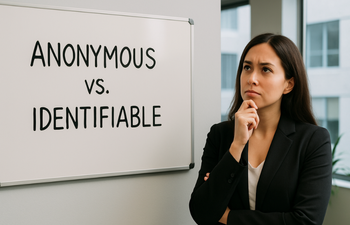How to Craft Survey Invitations That Actually Get Clicked
Master the art of crafting survey invitations that actually get clicked and drive higher response rates.

Introduction
You’ve crafted the perfect survey, great questions, ideal timing, and a slick interface. But nobody’s clicking the invite. Sound familiar? If your survey invitations aren't generating clicks, you're not alone. Inboxes are noisy, and attention spans are fleeting. This guide shows you how to craft survey invitations that actually get clicked by breaking down psychology, design, timing, and copywriting techniques that work.
Understanding Your Audience
Before you start writing, take a step back. Who are you talking to? Are they loyal customers, new leads, employees, or cold prospects? The language, tone, and urgency will vary.
- Segment your recipients for relevance
- Match your message to their interests
- Avoid jargon or internal lingo
Personalization begins with empathy. Put yourself in the recipient's shoes and ask: “What’s in it for me?”
The Psychology Behind Click-Worthy Survey Invitations
Human behavior is tricky, but predictable. People click for specific reasons:
- Curiosity: What’s this about?
- Value: Will this benefit me?
- Urgency: Should I act now?
- Trust: Is this legit?
Tapping into these mental triggers with your subject line and opening sentence can make all the difference.
Writing Magnetic Subject Lines
Subject lines are your first (and sometimes only) shot. If it’s not compelling, your email's dead on arrival.
- Keep it under 50 characters
- Use personalization tokens (like first names)
- Create a sense of urgency or curiosity
Examples:
“We want your opinion (and we’ll reward you!)”
“Only 2 minutes of your time = big impact”
“Hey Sarah, help shape our next product”
Nailing the Preview Text
That little gray text under the subject line? It’s prime real estate. Use it wisely. Instead of repeating the subject, expand on the benefit:
“Take our 3-minute survey and get a $10 Amazon card”
Keep it short and lead with value.
Personalizing Your Survey Invitations
Generic greetings are the enemy of engagement. If you’re using email marketing software, insert custom fields.
Try:
“Hi Jake, we need your feedback on our new feature.”
“Hey Maya, your insights matter to us.”
Even subtle tweaks can boost click rates significantly.
Structuring the Email Body for Action
Your email copy should guide the reader gently but firmly to the CTA.
Structure:
- Greeting
- Purpose of the email
- Why their input matters
- Incentive (if any)
- Clear CTA button
Use short sentences and bullet points for readability. No dense paragraphs!
Crafting an Irresistible Call-to-Action
“Take the survey” is okay. “Start the 2-minute survey” is better. Always use action verbs and time indicators.
Consider A/B testing these:
“Share Your Thoughts”
“Help Us Improve”
“Claim Your $10 Reward”
The Role of Design in Survey Invitations
A wall of text will get ignored. Design matters, even in emails. Use:
- White space
- One clear button
- Brand-aligned colors
- Mobile-responsive layout
Test your email on different devices before sending.
Incentives: The Double-Edged Sword
Offering a reward can double your response rate, but it needs to be handled correctly.
Be transparent. “Complete the survey to enter a draw for a $50 gift card” sets honest expectations.
Timing Your Survey Invitations
When you send matters almost as much as what you send. Try:
- Tuesdays or Wednesdays
- Between 10 a.m. and 1 p.m.
- Avoid weekends and holidays
Experiment with different days and analyze open/click rates to find your sweet spot.
A/B Testing for Continuous Improvement
You don’t need to guess what works. Use A/B testing on:
- Subject lines
- CTA button text
- Email layout
- Incentives offered
Even small tweaks can lead to noticeable improvements in click-through rates.
Mobile Optimization Is Not Optional
Over 60% of emails are opened on mobile. Your survey invite needs to look, and function, flawlessly on a phone.
Checklist:
- One-column layout
- Large buttons
- Concise text
- Responsive design
Always preview the mobile version before hitting send.
Using Social Proof to Increase Trust
Humans are herd animals. If others are doing it, we feel more comfortable joining in.
Try including:
“Over 1,000 users have already shared feedback!”
“Your colleagues rated this 4.8/5, what’s your take?”
For insights on choosing the best survey distribution channels, visit Email, SMS, or In-App? Best Channels for Sending Your Surveys.
Addressing Privacy Concerns Up Front
Many people hesitate to click surveys because they fear misuse of data. Reassure them.
Include:
“This survey is anonymous”
“Your feedback will not be shared”
“Data is stored securely and used for improvement only”
Keeping the Survey Short and Sweet
Tell them exactly how long it will take. And mean it.
Avoid saying:
“It’ll only take a few minutes!” (if it won’t)
Instead, be specific:
“This 3-minute survey will help us build better features.”
For nonprofits looking to maximize survey impact on a budget, check out Conducting Surveys for Nonprofits: Best Practices on a Budget.
Following Up, But Not Too Much
One reminder is fine. Two is pushing it. Three will land you in spam.
Wait 48–72 hours before sending a follow-up, and consider changing the subject line to re-engage.
Using Behavioral Triggers
Triggered emails based on actions (or inactions) perform better than mass blasts. Example:
“You recently purchased X. Help us improve your experience.”
Behavioral targeting makes your message feel timely and relevant.
Integrating Survey Links Seamlessly
Don’t bury your CTA. Make the survey link stand out.
Try:
- Buttons over hyperlinks
- Contrasting colors
- One-click access, no logins
Multi-Channel Survey Invitations
Emails aren’t your only option. Consider:
- SMS invitations
- In-app survey prompts
- Push notifications
- Social media DMs
Use each channel thoughtfully, and always respect user permissions.
Common Mistakes to Avoid
Even good intentions can lead to poor results. Avoid:
- Spamming with too many reminders
- Overloading the email with text
- Using clickbait subject lines
- Forgetting to test the survey link
Small missteps can significantly hurt credibility.
Measuring the Right Metrics
Clicks are important, but not the only metric. Track:
- Open rate
- Click-through rate
- Survey completion rate
- Drop-off rate
These insights guide your improvements and show where people lose interest.
Real-World Examples of Survey Invite Success
A company increased clicks by 40% just by adding a GIF to their email. Another company tripled responses using a $5 Starbucks gift card.
Look at case studies and adapt tactics for your brand.
Final Thoughts on Survey Invitations That Get Clicked
Crafting irresistible survey invitations is both art and science. With personalization, clear value, compelling design, and thoughtful timing, you can nudge people toward action. Just remember: the best survey in the world means nothing if no one clicks.
Frequently Asked Questions
Find answers to the most common questions about this topic
A good survey invitation is personalized, concise, compelling, and sets clear expectations.
Keep it under 150 words. Short, friendly, and direct works best.
Yes, incentives can increase response rates, but be transparent about them.
Use curiosity, personalization, or a benefit-driven approach, like 'Help Us Improve & Win a Gift Card'.
Mid-week mornings (Tuesday-Thursday) typically yield better open and click-through rates.
Absolutely. Most users open emails on mobile, so optimize both the invitation and survey format.









